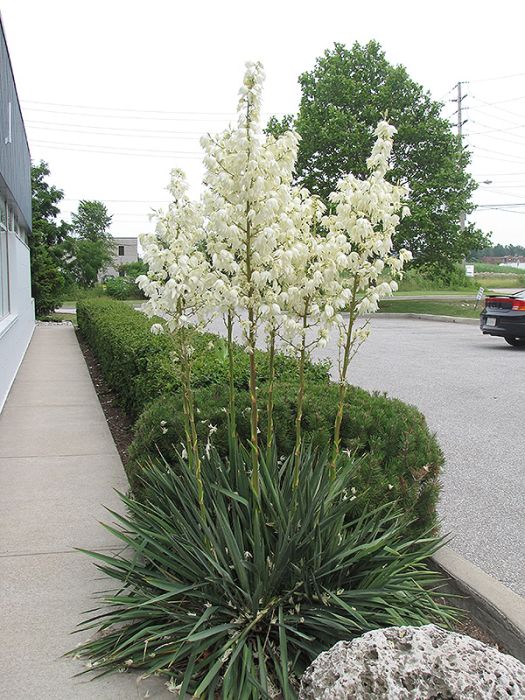Yucca, 'Adam’s Needle'



Out of stock
- Sun Preference
- Full-Sun
- Bloom Time
- June, July
Description
Deceptively tough evergreen perennial, native to the Southwest; Sword-like foliage;tall, sturdy flower stalks bare creamy white 2-3" long flowers. Dry soil and full sun is a must
Minnesota's Largest Selection of Perennials
Discover an unparalleled selection of perennials at Gertens! With the largest variety in Minnesota, we offer endless options of colorful perennials, natives, and pollinator plants to beautify your garden year after year. From vibrant flowers to lush foliage, our perennials are perfect for adding beauty and charm to your outdoor space. Visit Gertens today and see why we're known as Minnesota's Destination Garden Center!
Details
Height: 5 feet
Spread: 4 feet
Sunlight: ![]()
Hardiness Zone: 4a
Description:
Deceptively tough evergreen perennial, native to the Southwest; Sword-like foliage;tall, sturdy flower stalks bare creamy white 2-3" long flowers. Dry soil and full sun is a must
Ornamental Features
Adam's Needle features bold spikes of creamy white bell-shaped flowers rising above the foliage from mid to late summer. It has attractive grayish green foliage. The sword-like leaves are highly ornamental and remain grayish green throughout the winter. The fruit is not ornamentally significant.
Landscape Attributes
Adam's Needle is a multi-stemmed evergreen shrub with a more or less rounded form. Its relatively coarse texture can be used to stand it apart from other landscape plants with finer foliage.
This shrub will require occasional maintenance and upkeep, and may require the occasional pruning to look its best. Gardeners should be aware of the following characteristic(s) that may warrant special consideration;
- Spiny
Adam's Needle is recommended for the following landscape applications;
- Accent
- Rock/Alpine Gardens
- General Garden Use
- Container Planting
Planting & Growing
Adam's Needle will grow to be about 4 feet tall at maturity, with a spread of 4 feet. It tends to fill out right to the ground and therefore doesn't necessarily require facer plants in front. It grows at a medium rate, and under ideal conditions can be expected to live for approximately 20 years.
This shrub should only be grown in full sunlight. It prefers dry to average moisture levels with very well-drained soil, and will often die in standing water. It is not particular as to soil type or pH. It is somewhat tolerant of urban pollution. This species is native to parts of North America.
Adam's Needle makes a fine choice for the outdoor landscape, but it is also well-suited for use in outdoor pots and containers. Because of its height, it is often used as a 'thriller' in the 'spiller-thriller-filler' container combination; plant it near the center of the pot, surrounded by smaller plants and those that spill over the edges. Note that when grown in a container, it may not perform exactly as indicated on the tag - this is to be expected. Also note that when growing plants in outdoor containers and baskets, they may require more frequent waterings than they would in the yard or garden. Be aware that in our climate, most plants cannot be expected to survive the winter if left in containers outdoors, and this plant is no exception. Contact our store for more information on how to protect it over the winter months.
More Information
| Common Family Name | Desert Candle |
|---|---|
| Gerten Grown Plants | Gerten Grown Plants |
| Available for Pre-Order | No |
| Sun Preference | Full-Sun |
| Bloom Time | June, July |
| Mature Spread (Range) | Over 36" |
| Mature Height (Range) | 37" - 48" |
| USDA Hardiness Zone | 4, 5, 6, 7, 8, 9 |


